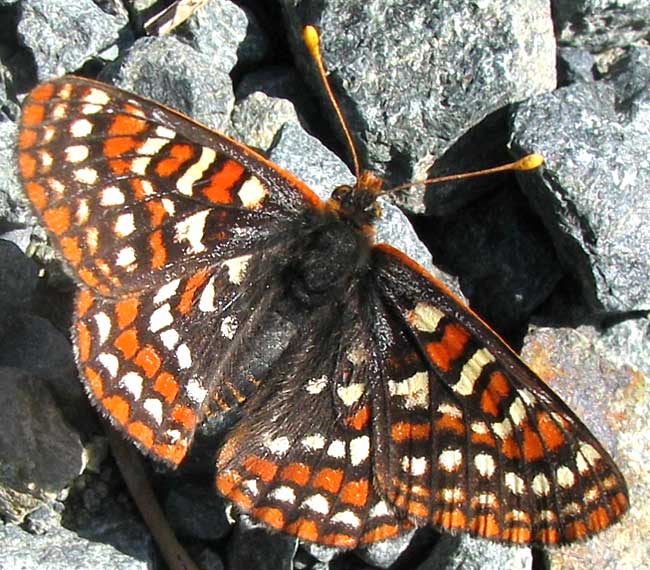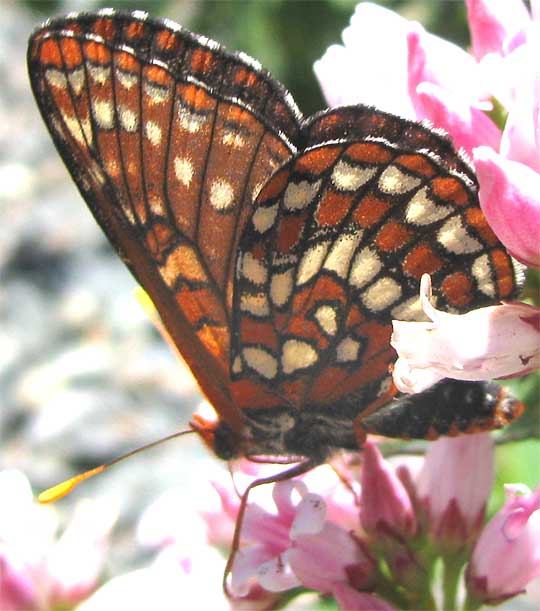Excerpts from Jim Conrad's
Naturalist Newsletter

from the May 31, 2009 Newsletter, issued from the Siskiyou Mountains west of Grants Pass, Oregon:
EDITH'S CHECKERSPOTS
When I got here about six weeks ago so many Painted Lady butterflies flitted among the flowering manzanitas that I figured I was in a wonderful place for butterfly watching. However, over the weeks the Painted Ladies have diminished in numbers dramatically and very few species have joined them.
Therefore, as I hiked up a gravel mountain road during last weekend's backpacking trip I was tickled when a butterfly completely new for me turned up, shown above.
That's the Edith's Checkerspot, EUPHYDRYAS EDITHA, and it wasn't the only one there; up ahead several of the same species fluttered about. I'd climbed into a whole zone of Edith's Checkespots. Apparently they didn't like the cool, conifer forest environment I'd been in so far, but this hot, sunny, gravel road traversing a mountain-ridge serpentine barren seemed to suite them just fine.
I'd never identified an Edith's Checkerspot, but their behavior was very familiar. They belong to the same Brush-footed Butterfly Family, the Nymphalidae, as Painted Ladies, and lots of species in that family are very fast fliers. The males perch someplace and dart out at nearly anything winging by, whether a female of the proper species or not, and that's exactly what the checkerspots were doing on the road that day.

The field guide says that among the species' most important host plants are Indian Paintbrushes of the genus Castilleja, and it's true that that scarlet-blossomed plant was flowering gloriously in the serpentine barren around us.
Edith's Checkerspots are distributed from southern British Columbia and Alberta south to Mexico's Baja California and southwestern Colorado. With such a large distribution they're evolving into local populations that even if they're not assigned subspecies status differ from one another in food choice, degree of mobility, and behavior such as where the females lay eggs.